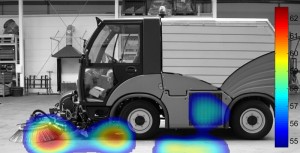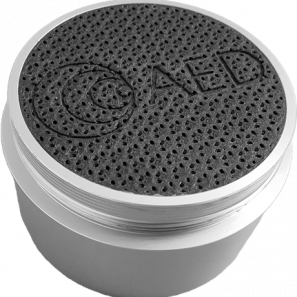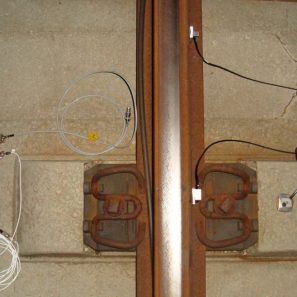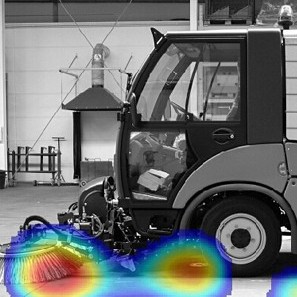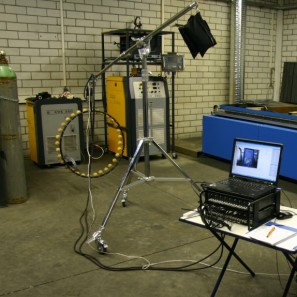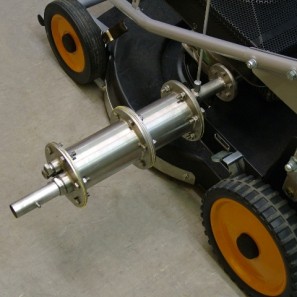Mapping of the sound field with microphone arrays
The simultaneous measurement with a large number of microphones (microphone array) as well as the subsequent processing of the recorded microphone signals through an analysis software allows very fast localization and separation of sound sources.
Any sound field can be mapped as colored, two-dimensional, absolute distribution of the sound pressure level. This method takes only a single measurement and works for any chosen scanning plane. To visualize the sound field, an optical photograph of the test object can be laid underneath the localization result.
Elliptical concave mirror
The working principle of a microphone arrays can be compared to the functionality of an elliptical concave mirror. The concave mirror can be steered mechanically to any focus. This focus corresponds to the first focal point of the concave mirror F1. The emitted sound waves of a source situated in F1 are reflected at the mirror surface into the second focal point of the mirror F2 where they sum up.
Due to the defined shape of the concave mirror, the travel times of the various sound waves are equal. This causes the addition of the sound pressures to be in-phase. Incident sound waves from other points in space are not reflected into F2 and are consequently not “seen” by the concave mirror. Thus, a directional pattern is generated.
Beamforming
To achieve the working principle of a concave mirror, it is necessary to connect the outputs of the microphones that are placed along a plane together using subsequent signal processing. To guaranty an addition of the various sound pressure time functions in-phase, these need to be corrected in amplitude and phase. This can be done by calculating the travel distances and the resulting travel time differences depending on a respective focus.
By varying the amplitude and phase correction factors, the microphone array can be focused on any point in space. Thus, it is possible to scan the entire space in front of the microphone array with one measurement and without additional mechanical steering of the microphone array.
